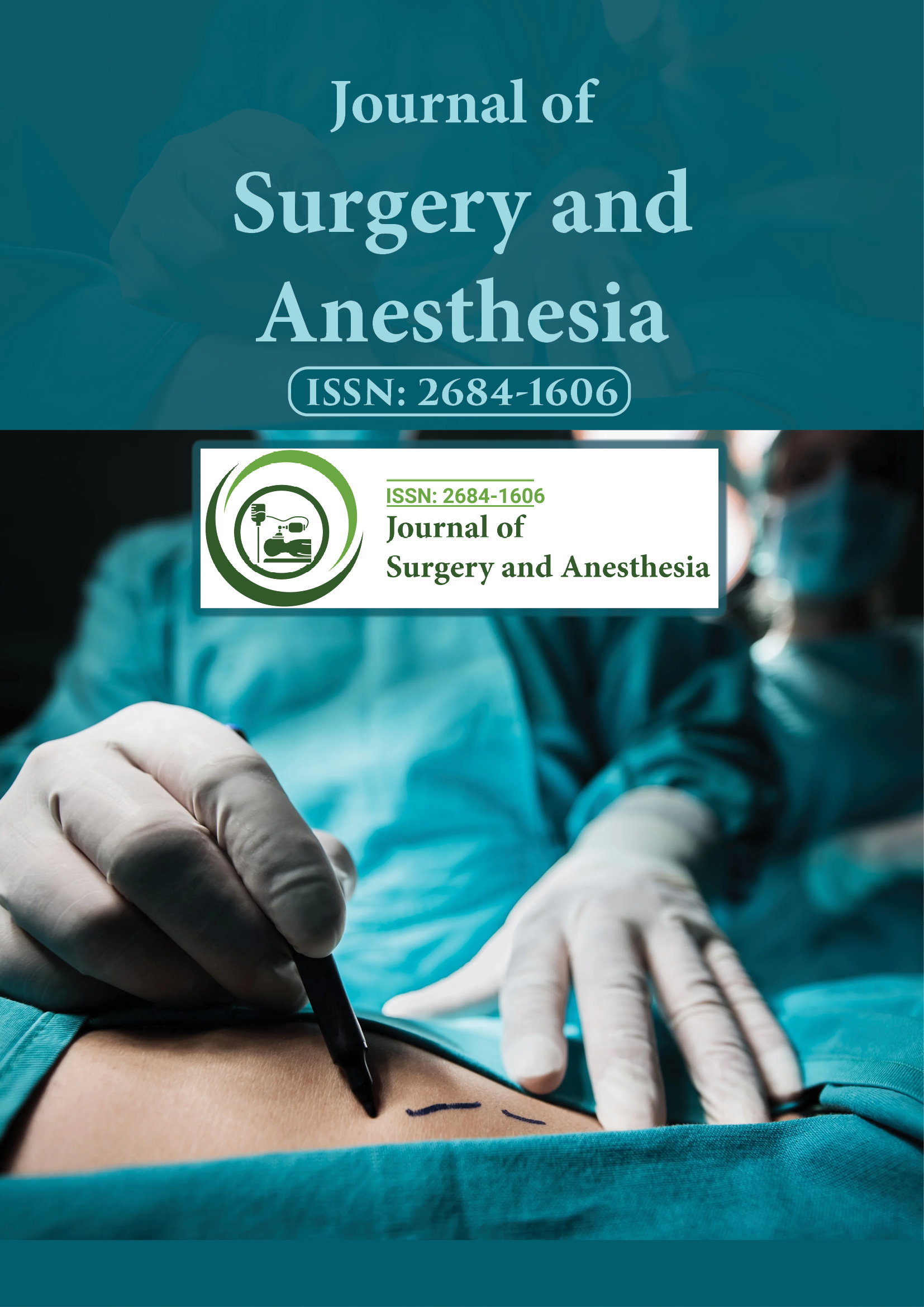Indexed In
- Google Scholar
Useful Links
Share This Page
Journal Flyer

Open Access Journals
- Agri and Aquaculture
- Biochemistry
- Bioinformatics & Systems Biology
- Business & Management
- Chemistry
- Clinical Sciences
- Engineering
- Food & Nutrition
- General Science
- Genetics & Molecular Biology
- Immunology & Microbiology
- Medical Sciences
- Neuroscience & Psychology
- Nursing & Health Care
- Pharmaceutical Sciences
Commentary - (2025) Volume 9, Issue 1
Advancing Surgical Precision with Modern Techniques
Pei Sun*Received: 01-Mar-2025, Manuscript No. JSA-25-29043; Editor assigned: 03-Mar-2025, Pre QC No. JSA-25-29043 (PQ); Reviewed: 17-Mar-2025, QC No. JSA-25-29043; Revised: 24-Mar-2025, Manuscript No. JSA-25-29043 (R); Published: 31-Mar-2025, DOI: 10.35248/2684-1606.25.9.275
Description
Minimally Invasive Surgery (MIS) has transformed the landscape of modern surgery by offering safer, more efficient, and less traumatic alternatives to traditional open surgical techniques. Over the past few decades, MIS has gained widespread acceptance across a variety of surgical disciplines, including general surgery, gynecology, orthopedics, urology, and cardiothoracic surgery. The foundation of this approach lies in its ability to achieve therapeutic goals while minimizing surgical trauma, blood loss, postoperative pain, and recovery time.
MIS encompasses a range of techniques, with laparoscopic and endoscopic procedures being the most commonly practiced. These methods use small incisions and specialized instruments, often aided by high-resolution imaging systems, to access and treat internal structures. The evolution of robotic-assisted surgery has further enhanced the precision and capabilities of MIS, allowing for complex procedures with improved dexterity and visualization.
One of the principal advantages of minimally invasive techniques is the significant reduction in postoperative complications. Smaller incisions reduce the risk of wound infections, hernias, and scarring, while the decreased physiological stress on the body allows patients to resume normal activities much sooner. Additionally, MIS often results in shorter hospital stays, translating to lower healthcare costs and improved patient satisfaction.
Laparoscopic cholecystectomy is one of the most well-known MIS procedures and has become the gold standard for treating gallbladder disease. Similarly, laparoscopic appendectomy, hernia repair, and colorectal surgeries have shown comparable or superior outcomes to open techniques. In gynecology, laparoscopic hysterectomy and myomectomy offer effective treatment options with reduced postoperative morbidity. In the field of urology, laparoscopic nephrectomy and prostatectomy have significantly improved recovery profiles without compromising oncological outcomes.
The introduction of robotic-assisted surgery has been particularly influential in advancing MIS. Systems like the da Vinci Surgical System provide surgeons with a magnified, 3D view of the operative field and the ability to perform fine movements through robotic arms that filter out tremors. This technology is especially beneficial in confined anatomical spaces, such as the pelvis, and has been widely adopted in prostate, gynecologic, and colorectal surgeries.
Despite its benefits, MIS is not without limitations. The steep learning curve, high initial equipment costs, and requirement for specialized training can pose challenges for healthcare systems, particularly in resource-limited settings. Furthermore, patient selection is crucial, as not all individuals are ideal candidates for MIS due to factors such as obesity, extensive adhesions from prior surgeries, or the nature of the underlying pathology.
Anesthesia considerations in MIS also differ from open surgeries. The use of carbon dioxide for insufflation during laparoscopy can affect cardiovascular and respiratory function, necessitating vigilant intraoperative monitoring and expertise in managing physiological changes. Anesthesiologists play a critical role in ensuring patient safety and optimizing outcomes through tailored anesthetic plans and postoperative pain management.
Research continues to expand the frontiers of MIS. Innovations such as Single-Incision Laparoscopic Surgery (SILS), Natural Orifice Transluminal Endoscopic Surgery (NOTES), and image-guided navigation systems represent the next generation of minimally invasive approaches. As surgical instruments and imaging technologies continue to evolve, the scope and safety of MIS are expected to further improve.
In conclusion, minimally invasive surgery represents a paradigm shift in surgical care. Its ability to deliver effective treatment with fewer complications and faster recovery has made it an indispensable part of modern surgical practice. Ongoing advancements and training will be key to further integrating MIS across specialties and healthcare settings, ultimately enhancing patient outcomes and satisfaction.
Citation: Sun P (2025). Advancing Surgical Precision with Modern Techniques. J Surg Anesth. 9:275.
Copyright: © 2025 Sun P, et al. This is an open-access article distributed under the terms of the Creative Commons Attribution License, which permits unrestricted use, distribution, and reproduction in any medium, provided the original author and source are credited.
